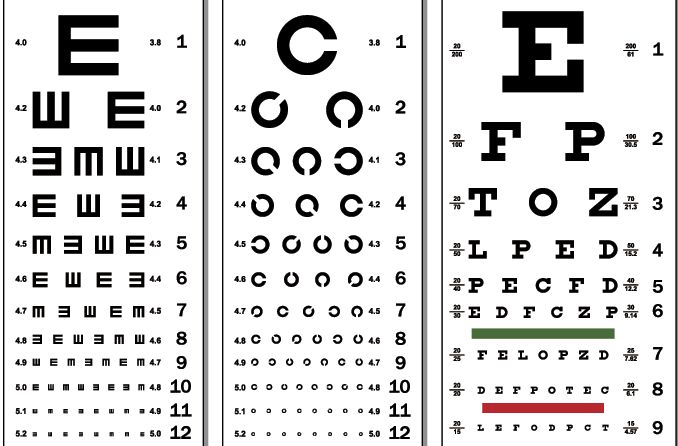Visual Acuity: Understanding, Measuring, and Maintaining Sharp Vision

Visual acuity is the clarity or sharpness of vision, indicating how well an individual can see and distinguish fine details. It is a crucial aspect of eye health, essential for diagnosing eye conditions and ensuring safe daily activities such as driving and reading. This article explores the concept of visual acuity, how it is measured, and ways to maintain and improve it.
What is Visual Acuity?
Visual acuity measures the eye’s ability to distinguish details and shapes of objects at a specific distance. It is vital for identifying refractive errors, detecting eye diseases, and evaluating the effectiveness of treatments. Understanding visual acuity helps in maintaining overall eye health and quality of life.
Methods to Measure Visual Acuity
The Snellen Eye Chart
The Snellen eye chart, developed by Dr. Hermann Snellen in 1862, is the standard tool for measuring visual acuity. It consists of rows of letters that decrease in size. The person being tested reads the smallest letters they can see from a set distance, usually 20 feet. A visual acuity measurement of 20/20 indicates normal vision, meaning the individual can see at 20 feet what a person with normal vision can see at that distance.
Alternative Eye Charts
• Tumbling E Chart: This chart features the letter “E” in different orientations (up, down, left, right). It is useful for individuals who cannot read letters, such as young children or those with literacy issues. The test involves identifying the direction the “E” is pointing.
• Broken Wheel Test: Used for children and non-readers, this test involves identifying cars with a broken wheel among a set of images.
• Picture Charts: These charts contain common images (e.g., animals, objects) in various sizes, making them suitable for young children and individuals with communication challenges.
• ETDRS Chart: Developed for the Early Treatment of Diabetic Retinopathy Study, this chart provides a more standardized and precise measurement, widely used in research settings.
Factors Affecting Visual Acuity
• Age: Vision can deteriorate with age due to conditions like presbyopia or cataracts.
• Health of the Retina: Diseases such as macular degeneration and diabetic retinopathy impact retinal function.
• Refractive Errors: Myopia (nearsightedness), hyperopia (farsightedness), and astigmatism distort vision.
• Environmental Factors: Poor lighting and excessive screen time can strain the eyes and affect visual acuity.
Improving and Maintaining Visual Acuity
Eye Exercises
Eye exercises can strengthen eye muscles, improve focus, and reduce eye strain. Practices such as focusing on distant objects or moving the eyes in different directions are beneficial for maintaining good visual acuity.
Proper Nutrition
A diet rich in essential nutrients supports overall eye health. Vitamins A, C, and E, omega-3 fatty acids, and zinc are particularly important. Foods such as carrots, leafy greens, fish, and nuts are excellent sources of these nutrients, helping to prevent age-related vision problems.
Regular Eye Exams
Regular eye exams are crucial for early detection and management of eye conditions. Early diagnosis of issues like refractive errors, glaucoma, and macular degeneration allows for timely intervention, preventing severe vision loss.
Common Visual Acuity Problems
• Myopia (Nearsightedness): Difficulty seeing distant objects clearly, commonly caused by elongation of the eyeball.
• Hyperopia (Farsightedness): Difficulty seeing close objects clearly, often due to a shorter than normal eyeball.
• Astigmatism: Blurred vision caused by an irregularly shaped cornea or lens.
• Presbyopia: Age-related difficulty in focusing on close objects, typically beginning around age 40 as the lens loses flexibility.
